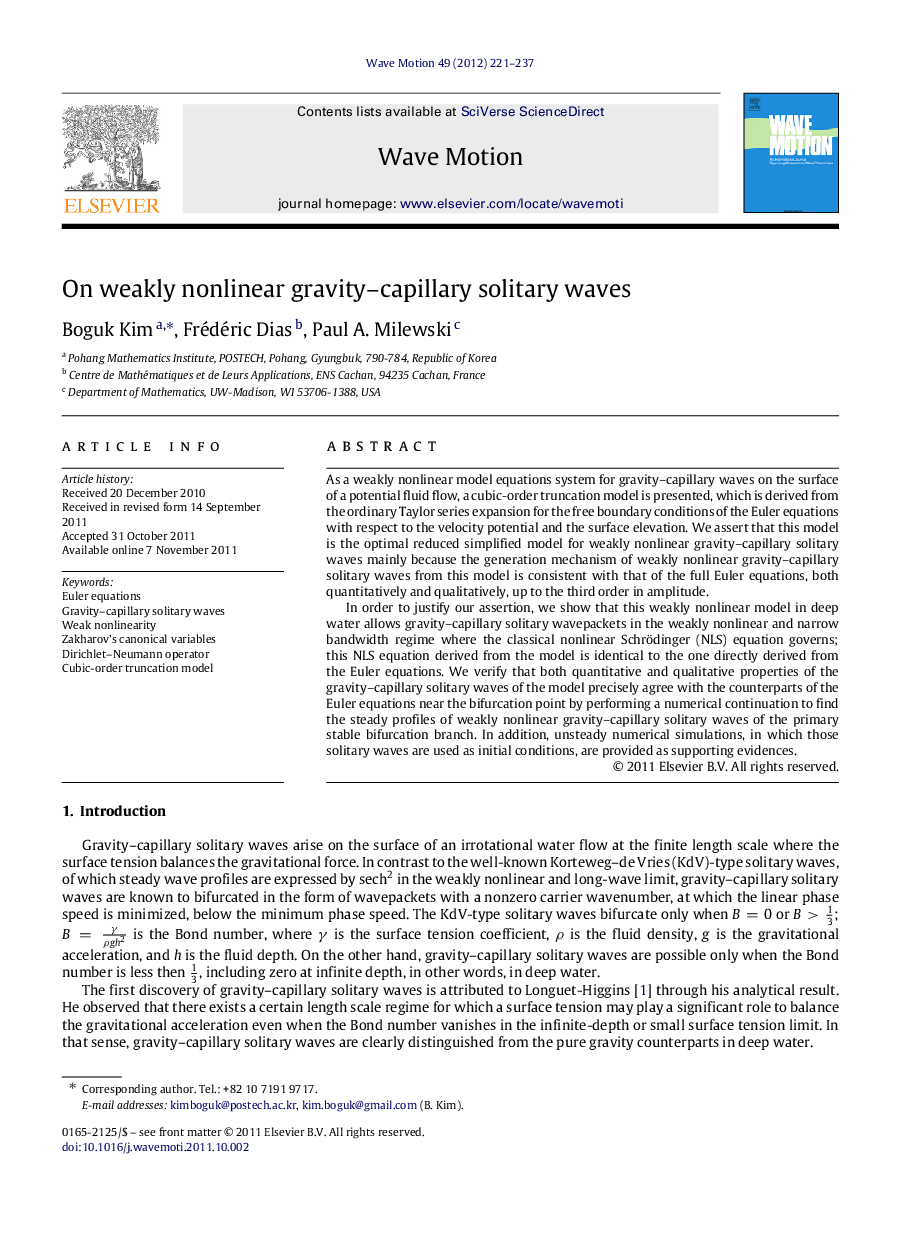| Article ID | Journal | Published Year | Pages | File Type |
|---|---|---|---|---|
| 1901286 | Wave Motion | 2012 | 17 Pages |
As a weakly nonlinear model equations system for gravity–capillary waves on the surface of a potential fluid flow, a cubic-order truncation model is presented, which is derived from the ordinary Taylor series expansion for the free boundary conditions of the Euler equations with respect to the velocity potential and the surface elevation. We assert that this model is the optimal reduced simplified model for weakly nonlinear gravity–capillary solitary waves mainly because the generation mechanism of weakly nonlinear gravity–capillary solitary waves from this model is consistent with that of the full Euler equations, both quantitatively and qualitatively, up to the third order in amplitude.In order to justify our assertion, we show that this weakly nonlinear model in deep water allows gravity–capillary solitary wavepackets in the weakly nonlinear and narrow bandwidth regime where the classical nonlinear Schrödinger (NLS) equation governs; this NLS equation derived from the model is identical to the one directly derived from the Euler equations. We verify that both quantitative and qualitative properties of the gravity–capillary solitary waves of the model precisely agree with the counterparts of the Euler equations near the bifurcation point by performing a numerical continuation to find the steady profiles of weakly nonlinear gravity–capillary solitary waves of the primary stable bifurcation branch. In addition, unsteady numerical simulations, in which those solitary waves are used as initial conditions, are provided as supporting evidences.
► Cubic-order truncation model for the free surface boundary conditions of the Euler equations in terms of Zakharov’s canonical variables. ► The optimally accurate model for weakly nonlinear gravity–capillary solitary waves. ► Precise derivation of the NLS equation for weakly nonlinear gravity–capillary solitary wavepackets. ► Consistent steady solutions and dynamics of weakly nonlinear gravity–capillary solitary waves.
